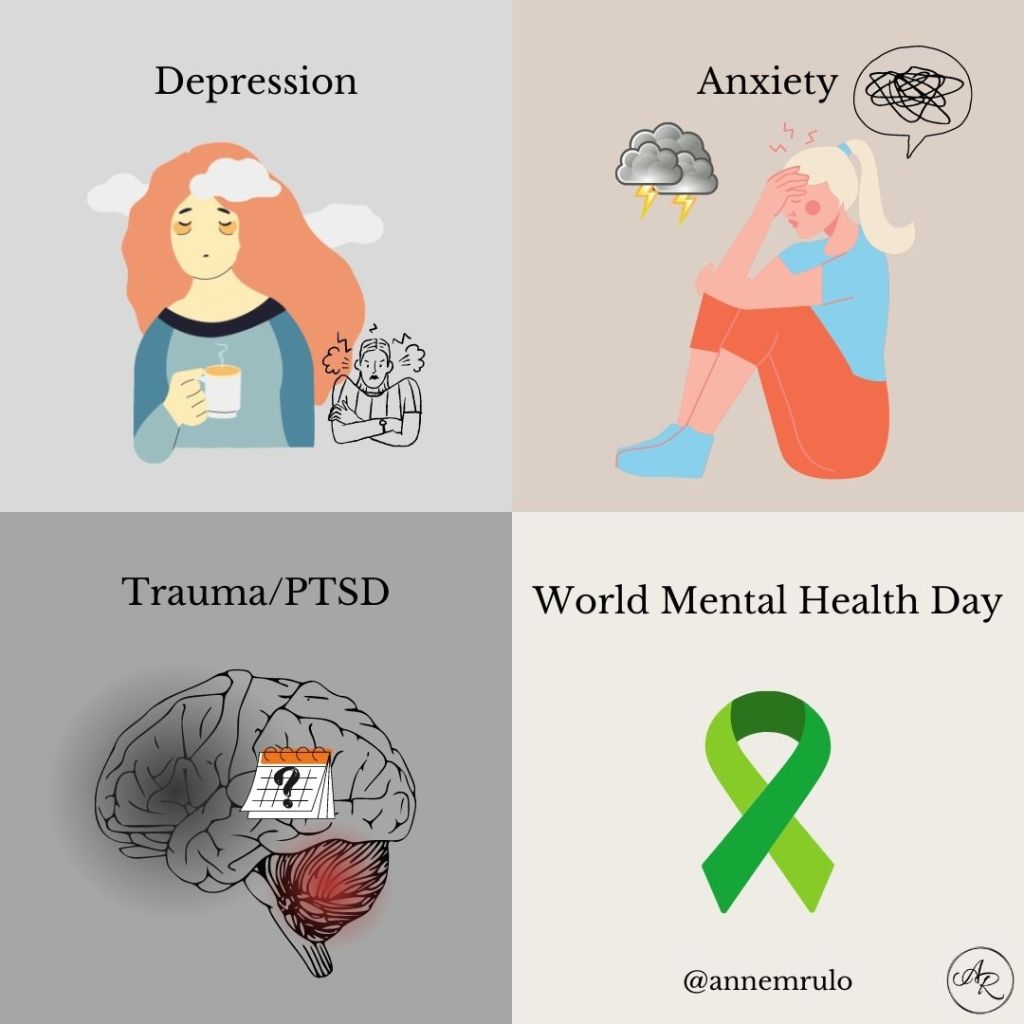It is so important to talk about mental health. But, visuals are an extra way to increase our understanding of what a mental health difficulty may feel like, especially if you have never experienced it yourself. So, in honor of World Mental Health Day, here’s a (very simplified) picture explanation of some of the three most common mental health challenges.

The first, depression, is experienced by 5-10% percent of the population, with a higher reported incidence in women than men. But, the number for men may be higher as male depression often manifests as anger and may be missed as depression. That is why there is a smaller, “angry” drawing next to the figure of the woman. Sadness, tiredness, and brain “fog” are all common as well. It’s kind of like a negative “filter” standing in the way of receiving one’s internal and external world accurately.
The second, anxiety, is experienced by 7-19% of the population. Anxiety can come in a lot of forms including specific phobias or general fear and worry. Many people who struggle with anxiety report feeling as though their thoughts are often racing and worry that “something” could happen even if there is no evidence.
The third, trauma, is more prevalent. Statistics suggest that 50% or more of the population experiences some traumatic event. While not all people develop mental challenges, this helps show what happens when a brain is negatively impacted by trauma or PTSD. The front part of the brain becomes less active, reducing the ability to think rationally when triggered. The emotional, survival part of the brain (in red) is more active. And, the calendar shows the hippocampus that can shrink, making it more difficult to “stay present” in the moment. This is why trauma can feel like it is happening all over again, as intense as the original experience.
While oversimplified, I hope these visuals may help us understand a bit more about some of the most common mental health difficulties. Of course, if someone wants to share, it’s always best to ask, “What is this like for you?” and listen compassionately. This does more good than you know.
(Statistics drawn from the National Institute of Mental Health, VA, & NAMI)
